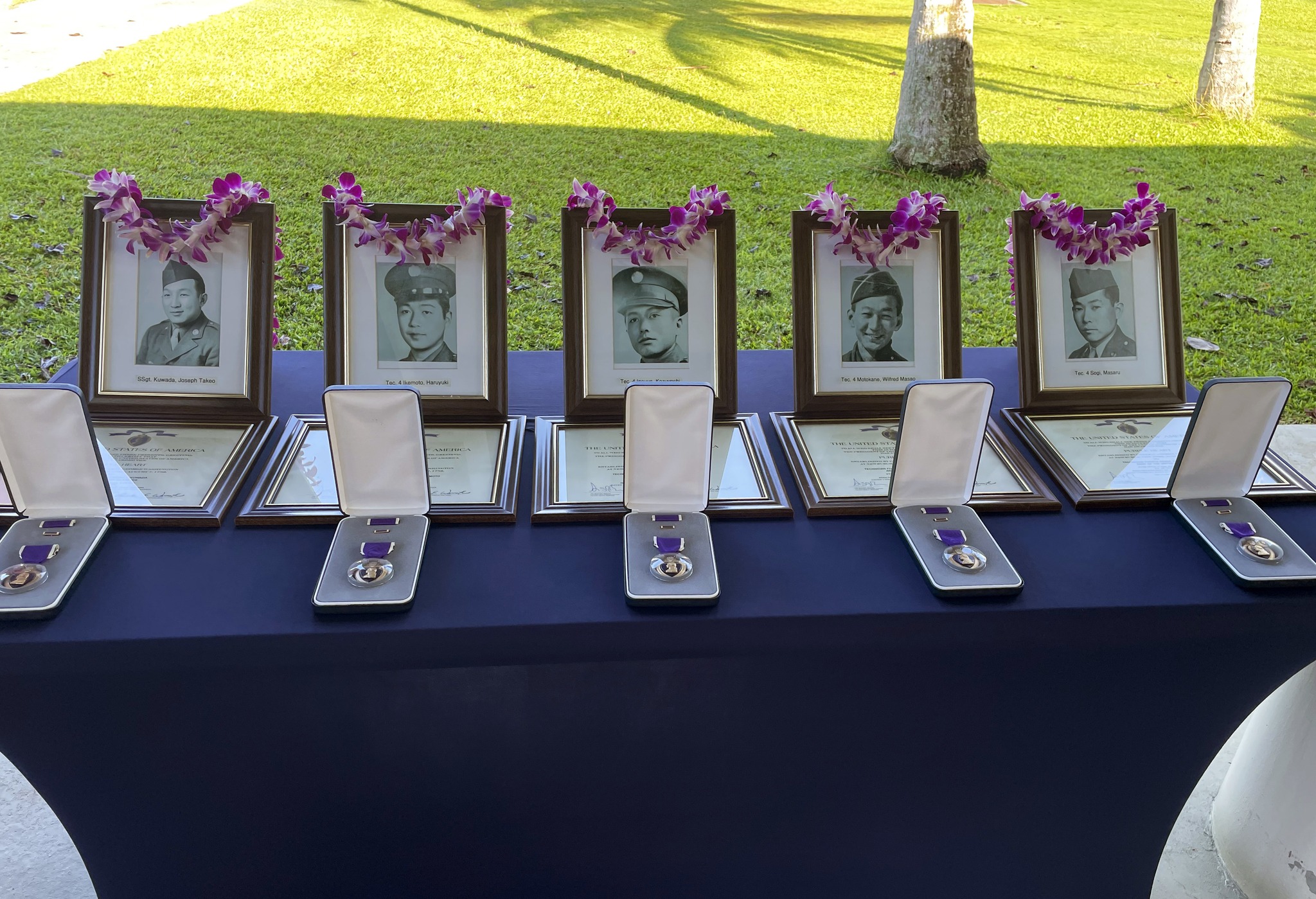

Almost eight decades after a plane crash took their lives, five U.S. Army soldiers are finally being awarded the Purple Heart.
The five soldiers were among 31 killed 79 years ago when their plane crashed while trying to land in Okinawa. However, for decades only two of the victims of the crash ever received the Purple Heart. The U.S. Army is now working to correct that. On Friday, May 10, these five, all Japanese-American soldiers from Hawaii, were posthumously given the award in a ceremony at Pearl Harbor.
The five — Staff Sgt. Joseph Kuwada, Technicians Fourth Grade Haruyuki Ikemoto, Wilfred Motokane, Kanzuyoshi Inouye and Masaru Sogi — were part of the Military Intelligence Service (or MIS). The MIS was predominantly made up of Japanese Americans who used their language skills for intelligence gathering, ranging from interrogating captured enemy personnel to translating messages the U.S. got a hold of.
On Aug. 13, 1945, the five soldiers from Hawaii were with 26 others on a C-46 cargo plane, part of a wider airlift from the Philippines to Okinawa. According to military records, the plane made three attempts to land on the blacked-out airfield, crashing on the third attempt and killing all onboard. The other occupants included four crewmembers of the plane, 12 paratroopers with the 11th Airborne Division, five counterintelligence soldiers and five other members of the MIS.
Subscribe to Task & Purpose Today. Get the latest military news and culture in your inbox daily.
Despite all of that, only two of the 31 soldiers on board the plane had ever been awarded Purple Hearts. Instead, most of the victims were listed as “dead, non-battle,” and were not given the honor. The U.S. military is trying now, decades later, to make up for that. After a year-long review process, the Army is now in the process of giving the Purple Hearts to the families of the 29 other victims. Researchers who helped find the discrepancy attributed it to a mix of confusion near the end of the war in the Pacific and the fact that the plane’s passengers belonged to four different units, the Associated Press reported. Researchers also determined that racism did not play a role in the omission, with most of the victims of the crash being Caucasian.
“Shame on us for not recognizing that before so today is a righting of a wrong but it’s so important,” Maj. Gen. Brian Eifler, current commander of the 11th Airborne Division, said at the ceremony.
The Purple Hearts were presented to the families of the five soldiers by retired Army Gen. Paul Nakasone. Nakasone, who previously headed U.S. Cyber Command, is the son of a MIS soldier (who served after the end of World War II).
One of the honored soldiers’ sons, Wilfred Motokane Jr., told local news outlet KHON2 that the Army’s posthumous awards were welcome. “I think it’s like a long time coming,” he said, “but we’re happy it got done!”
The Army is now looking for the families of the 24 other deceased soldiers so that they can receive the posthumous awards. Those families can contact the Army Human Resources Command’s Awards and Decorations Branch.
The latest on Task & Purpose
- Marine breaks world record in deadlift competition
- Army says combat patches memo on social media is ‘not valid’
- Army trainee dies in basic training at Fort Jackson
- How grooming standards have changed in the U.S. military
- A soldier reenlisted while taped to a Howitzer cannon and that’s awesome
